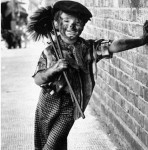Because of factories, children were forced to start working at a age as young as eight. Which children want to work at eight? I certainly did not. There was an increase in labor as the factories needed workers. Children were used to complete simple, yet dangerous and dirty tasks. Some of the jobs were piecers which fixed the snapped thread on the machines, scavengers, which cleared dirt and dust off so it would not get in the way, and chimney sweeps, where the children had to be small. Along with the dangerous and dirty tasks, the children often worked long days, with little pay. Again, eight year old’s do not want to work especially if they are not getting paid. The different areas of the country provided different needs, so starting ages and tasks varied from region to region. As stated above, in industrial areas, piecers, scavengers, and chimney sweeps were needed, but on the other hand, children in rural places most often did not start working until they were older and their jobs consisted of farm-related tasks.
Many people as well as authors in society found child labor hateful (as most likely the children as well). Authors such as Elizabeth Barrett Browning and Charles Dickens wrote novels concerning topics like child labor. Their novels were a sort of social commentaries directing towards the citizens. They wanted to catch the attention of the people of the middle and upper classes and tell them what was going on. This act then sparked some reformers to bring the said issues to Parliament. The Factory Act and the Mines Act were eventually passed. Because of them, children in factories had to be at least nine to start working and their hours were limited until they turned thirteen. In mines, the children had to be at least ten years old to begin working. Extremely young children were no longer employed and the standards were finally raised because of the legislation.
Although child welfare became better, the working conditions stayed pretty much the same and the children continued to be mistreated by their employers. Furthermore, because of being in the lower classes, the parents of the children had little say as for changes and better treatment. By the end of Queen Victoria’s reign, more legislation was passed regarding schooling and age limitations.
References/Other Useful Links:
Griffin, Emma. “Child labour.” British Library. British Library Board, n.d. Web. 27 December 2015. <http://www.bl.uk/romantics-and-victorians/articles/child-labour>
Agnew, Thomas. “Victorian Child Labor and the Conditions They Worked In.” Victorian Children. Paxton Price, 2 March 2014. Web. 27 December 2015. <http://www.victorianchildren.org/victorian-child-labor/>
“Victorian Britain: Children in factories.” BBC. BBC, n.d. Web. 27 December 2015.<http://www.bbc.co.uk/schools/primaryhistory/victorian_britain/children_in_factories/>
Photograph also taken from www.victorianchildren.org
